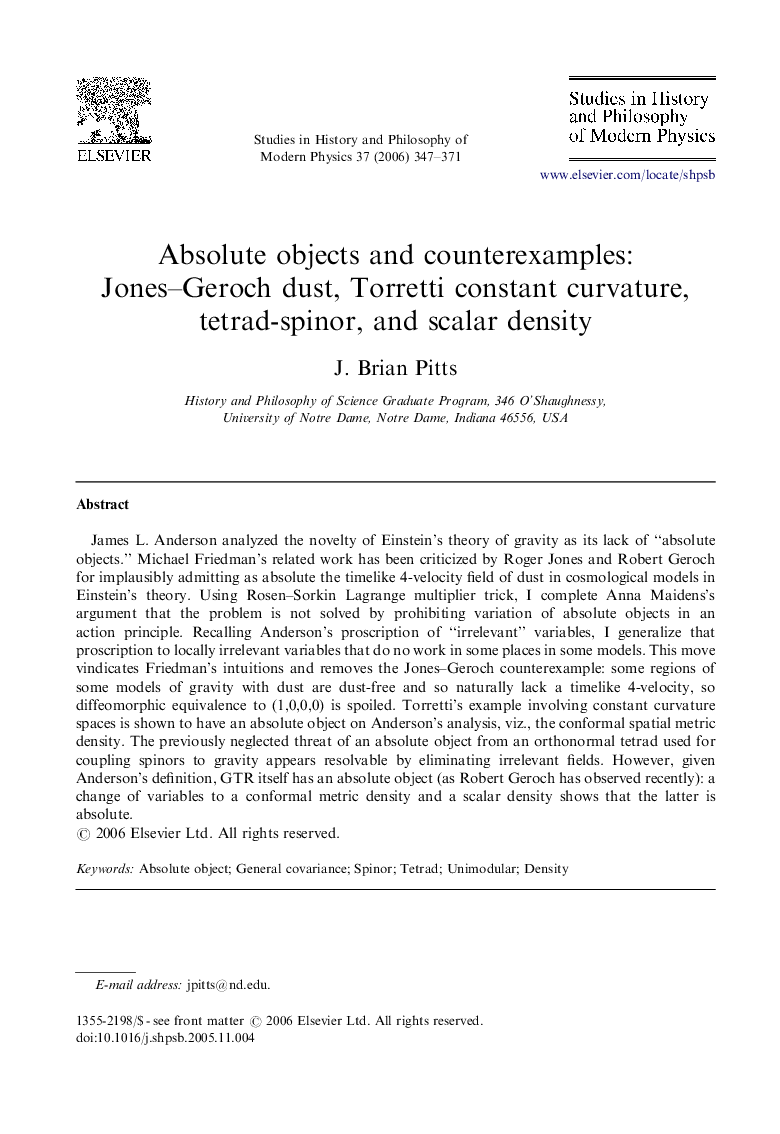| Article ID | Journal | Published Year | Pages | File Type |
|---|---|---|---|---|
| 1161319 | Studies in History and Philosophy of Science Part B: Studies in History and Philosophy of Modern Physics | 2006 | 25 Pages |
Abstract
James L. Anderson analyzed the novelty of Einstein's theory of gravity as its lack of “absolute objects.” Michael Friedman's related work has been criticized by Roger Jones and Robert Geroch for implausibly admitting as absolute the timelike 4-velocity field of dust in cosmological models in Einstein's theory. Using Rosen-Sorkin Lagrange multiplier trick, I complete Anna Maidens's argument that the problem is not solved by prohibiting variation of absolute objects in an action principle. Recalling Anderson's proscription of “irrelevant” variables, I generalize that proscription to locally irrelevant variables that do no work in some places in some models. This move vindicates Friedman's intuitions and removes the Jones-Geroch counterexample: some regions of some models of gravity with dust are dust-free and so naturally lack a timelike 4-velocity, so diffeomorphic equivalence to (1,0,0,0) is spoiled. Torretti's example involving constant curvature spaces is shown to have an absolute object on Anderson's analysis, viz., the conformal spatial metric density. The previously neglected threat of an absolute object from an orthonormal tetrad used for coupling spinors to gravity appears resolvable by eliminating irrelevant fields. However, given Anderson's definition, GTR itself has an absolute object (as Robert Geroch has observed recently): a change of variables to a conformal metric density and a scalar density shows that the latter is absolute.
Related Topics
Physical Sciences and Engineering
Physics and Astronomy
Physics and Astronomy (General)
Authors
J. Brian Pitts,
